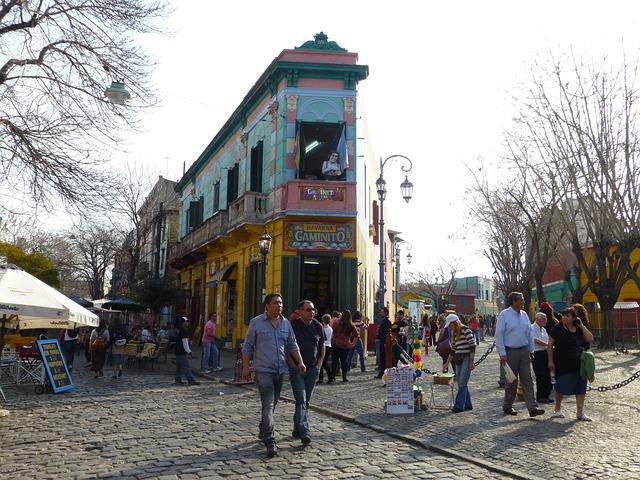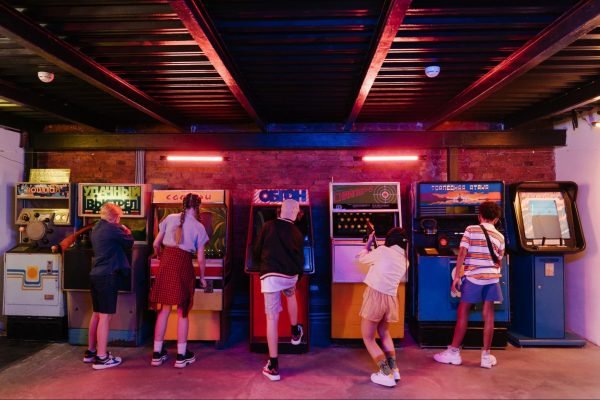Even though in Argentina there are many languages spoken (such as Mapuche, Guaraní, and Tehuelche, among others), Spanish is the official language.
Most people in the country speak Spanish, which is definitely the most spoken language in Buenos Aires, the capital city. For that reason, many languages tourist choose Buenos Aires as a destination to learn Spanish.
Instead of spending years going through boring Spanish lessons far from where the language is spoken, it is common to opt for an immersive learning experience by visiting Buenos Aires or any other city in Argentina.
Immersive learning experiences are not only a pretty effective method to improve your Spanish skills but also a life-changing experience. In most cases, when staying abroad, you visit unique places and bond with locals and other visitors who may share the learning experience with you.
One of the reasons why many people choose to learn Spanish in Argentina is because it is a pretty affordable place for visitors that come from countries with strong currencies, such as American Dollars or Euros. Thus, by opting for Buenos Aires, you can get the most of your money, purchase the best Spanish course, and access excellent accommodation and great activities.
Table of Contents
Buenos Aires highlights
Buenos Aires is one of the most important cities in South America. Known as the “Paris of South America”, the city offers a never-ending array of things to do and places to visit, not to mention its cuisine, its year-round good weather, and the amiable locals. They are always keen to speak to foreigners and learn about their culture.
Even though it is hard to resume all the good things the city has to offer, below is a list of the places and activities you should not miss when visiting the Argentine capital city.
1. Plaza de Mayo
Founded in the 1700s, this charming square has been the scenario for several relevant historic events, such as the rebellion against Spain and the vigils of Madres de la Plaza de Mayo.
2. Casa Rosada
Located at Plaza de Mayo, Casa Rosada is the government house. It was built during the mid-1800s and stood out for its Italian architecture.
3. Cementerio de la Recoleta
The Cementerio de la Recoleta is quite popular because it has several stunning mausoleums, many of which are the resting place of famous people, such as Eva Perón.
4. La Boca
La Boca is the most colorful neighborhood in Buenos Aires. This bohemian spot attracts artists and creatives to enjoy its picturesque streets, filled with art and tango.
5. Teatro Colón
Teatro Colón is one of the most important theatres in South America, and it has been the scenario of international artists, such as Stravinsky, Caruso, Callas, Toscanini, and Pavarotti.

Buenos Aires’ Spanish
When arriving in Argentina for the first time, many people are surprised by how Spanish is spoken in the Río de la Plata.
If you are used to listening to Spanish people, you will immediately notice that Argentines have entirely different accents. This comes, as no surprise, since languages transform through time and influence, so there is no reason to believe that Spanish in South America will be the same as in Madrid.
The Argentine accent is quite influenced by Italian, especially in Buenos Aires, where Italian immigration is predominant. Therefore, it can be a bit confusing when first arriving in the city, but you will get used to it.
One of the things you should know is that Argentines tend to avoid pronouncing the “s” at the end of words. This is more common outside Buenos Aires, but you can also hear it within the city.
In addition, in Buenos Aires, the letters “ll” and “y” are pronounced differently than in Spain or other South American capitals. Porteños use the “sh” sound for both letters. This can be disorienting initially, so it is helpful to be aware of it in advance.
Common expressions in Buenos Aires
Aside from understanding the accent of Buenos Aires locales, knowing some common expressions will also help you communicate.
Below, we have narrowed down a list of some of the most common expressions you will probably hear as soon as you arrive in the city.
1. Greetings
Within an informal context, you will probably hear expressions such as “¿Qué hacés?”, “¿Qué onda?” or “¿Todo bien?” which can be translated as “What’s up?”
2. Dude
One of the most confusing expressions in Buenos Aires is “boludo” which can be translated as “a person with big genitals”. Even though it sounds strange, in most cases, “boludo” is used as an informal expression to refer to someone and can be translated as “dude”. Nevertheless, phrases like “sos un boludo” are actually aggressive and can be translated as “you are stupid”.
3. Lunfardo expressions
Lunfardo is the local slang in Buenos Aires. Many common words come from this slang and can confuse tourists because they are not taught in any Spanish book.
Thus, if you are visiting Buenos Aires, knowing a little lunfardo can help you better understand the locals and their culture.
Among the most used lunfardo words is “laburo” which means “work”. You will probably hear a local saying “tengo the laburar” which means, “I have to work” or “tengo un laburo nuevo” which means, “I have a new job”.
Another very common lunfardo word is “che” which is a pretty popular expression due to Ernesto “Che” Guevara. The word “che” can sometimes be translated as “hey,” but it can also mean other things, such as “come on”.
“Pibe” is another very common lunfardo word. It sometimes means “boy”, but it can also mean “guy,”; while “Mina” is an informal way to refer to a woman, and it can be translated as “lady” or “girl”.





